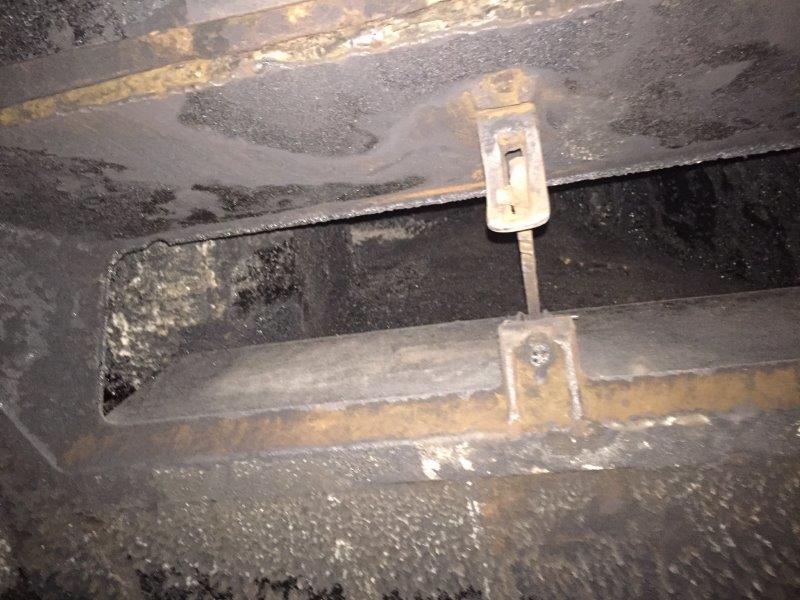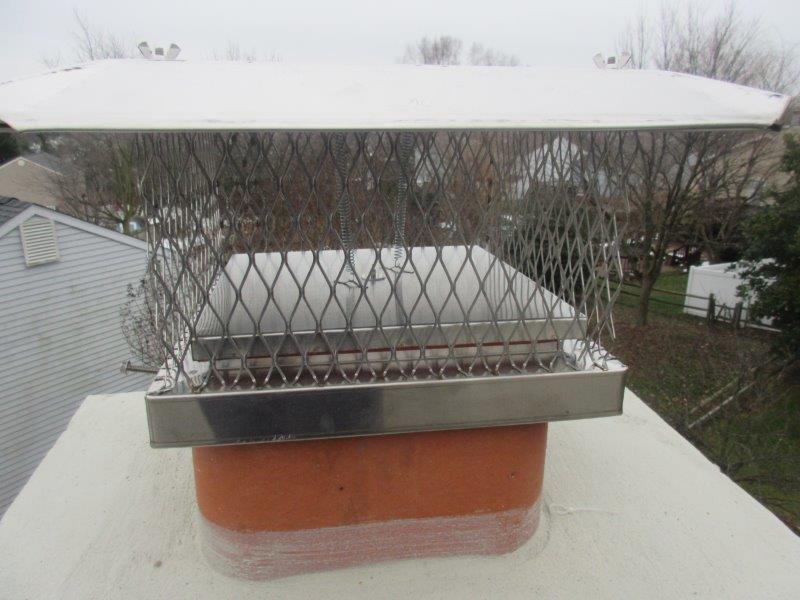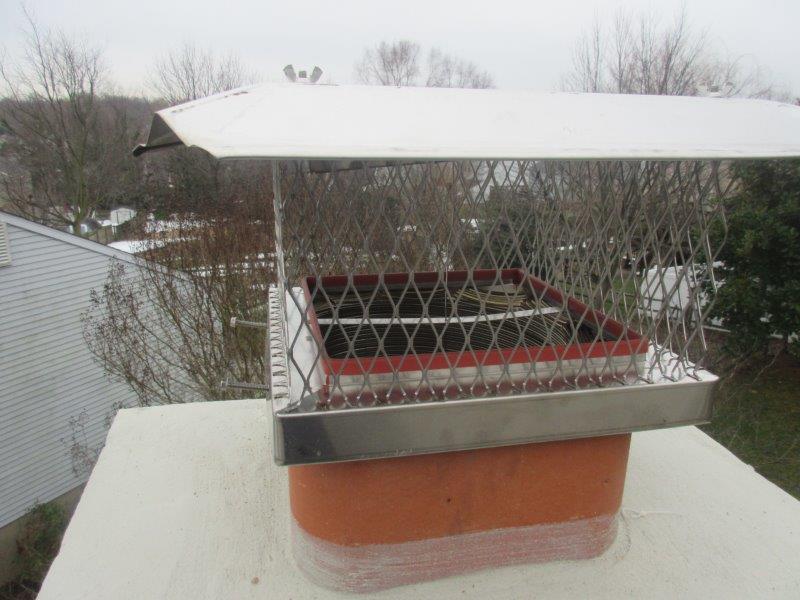Plus Tips On Which Is Right For Your System
We get a lot of questions about chimney dampers: what are they, what do they do, and which should you use for your gas or wood burning fireplace? All good questions, so we thought we’d do a little chimney damper 101. Ready to get started?
#1 The Different Types Of Dampers
There are many different kinds of dampers:
- Throat dampers. These are dampers that you traditionally reach up and grab from the lower part of the fireplace. Most people incorrectly refer to these as flues, or they think they’re opening the flue.
- Top-sealing dampers. These are dampers that sit on top of the terra cotta flue, similar to how a chimney cap would be mounted.
- Woodstove dampers. These are dampers that are used to control the exhaust flow, which gets a little more complicated. With a woodstove damper, you’re letting exhaust out, but also adjusting the fresh air intake to make the fire burn the way you want it to.
For the purpose of this post, we’ll be talking about throat dampers and top-sealing dampers, which are sort of like trap doors you open and close to let smoke out of the flue (which is basically the exhaust pipe of your chimney).

Image of a throat damper

Top sealing damper while closed.

Top sealing damper while open.
#2 The Purpose Of Dampers
They let smoke out.
The #1 purpose of the damper is to let smoke out of the flue so you can safely enjoy a fire in your fireplace.
If your damper isn’t opened when you start a fire in the fireplace, smoke and noxious gases will be prevented from exiting the home, and will instead come through the fireplace opening back into your home.
They keep out cold air or hot air.
Dampers are also designed to prevent air from flowing into and out of your home through the fireplace opening. We’re going to dip our toes into physics, but don’t worry, we won’t get too nerdy.
Here goes: when you heat your home in the winter time, you increase the atmospheric pressure. If you heat your home to 72 degrees and it’s 35 degrees outside, the atmospheric pressure inside your home is greater. (This is the same principle that allows a hot air balloon to lift off the ground.)
When the atmospheric pressure inside your home is greater than outside your home and the entire house is closed up, the only place for that atmospheric pressure to escape is through the fireplace opening.
Pretty easy concept to understand, right?
But what most people don’t understand is that the exact reverse happens in the summertime.
When you close your home in the summertime and turn on your AC, you lower the atmospheric pressure in the home. So the natural air currents outside that is 90 degrees want to fall down your chimney.
Every time your central air unit comes on, it creates a vacuum or suction that helps suck in that hot air.
Where does it pull from?
The path of least resistance, which is going to be the fireplace opening.
As you can imagine, pulling in hot, humid 90 degree air down your chimney drives up your energy costs and prevents your house from getting as cool as you like. The flow coming in and out of a 1 foot square flue liner is the rough equivalency of leaving a bedroom window open about ⅓ of the way.
Think about the amount of hot air that would come in if you left your bedroom window open in the summertime or the amount of warm air that would escape through that window in the winter.
That’s one reason why the damper exists. When it’s shut, it’s designed to minimize the passage of air in and out of the home.
Throat Dampers VS Top-Sealing Dampers: The Biggest Differences
The problem with throat dampers is that they are, at best, 70% effective at stopping the airflow we talked about.
These dampers are made of cast iron, similar to a black cast iron skillet you make cornbread in, so they don’t last long, either. Imagine if you didn’t oil your cornbread skillet. Just sitting on a shelf in your kitchen, it would turn to rust from the water vapor that’s inside the air in your home.
Now, imagine putting that cast iron skillet in a masonry chimney that has different caustics in it. Water comes in, the damper rusts out, the pins break, or they warp. Or they may become overheated and warp.
Either way, they don’t last and never really provide a great seal.
That’s where top-sealing dampers really outperform.
These dampers are operated by a stainless steel cable that goes down the flue liner and mounts to the inside of the firebox. When closed, the damper pulls down tight and gives you an airtight, watertight seal.
In other words: that heat going up the chimney stops at that point, so you don’t have heat escaping your home.
Not only do you save on heating costs and energy costs in the winter, you save on AC costs in the summer by not pulling in hot, humid air.
Another benefit is the top-sealing dampers we sell and install have a lifetime warranty. They’re stainless steel, so it’s a lifetime fix. But that doesn’t mean top-sealing dampers are the better choice for every home!
Have A Gas Fireplace? Read This Before Choosing Your Damper!
If you have a gas fireplace, there’s a good chance you have a standing pilot light, which means you’re always going to be burning fuel.
If you have a throat damper, it is installed with something called a damper stop, which prevents it from closing all the way. The damper will typically leave an inch or two gap, depending on the manufacturer.
The reason for this is that you’ll get enough passage of noxious gases going up the chimney, and these dangerous gases won’t be trapped in the firebox and pulled into the home.
This is incredibly important, because the gas you’re not going to smell is carbon monoxide, which is colorless, odorless, tasteless, and lethal.
If you had a top-sealing damper on your gas fireplace with a standing pilot light, you would be trapping that gas in your home and breathing it in.
Carbon monoxide is a silent killer, and it causes the exposed individual to have flu like symptoms (nausea, headaches, tiredness). You’re more likely to experience carbon monoxide issues in the winter when you’re using your heating appliance more.
However, this is also when the flu is very common, so you might not think anything of it.
The reason why this gas is so dangerous is that your body prefers to breathe carbon monoxide over oxygen. The hemoglobin in your blood bonds with carbon monoxide better than oxygen. It’s kind of like going to a restaurant and being offered a ham sandwich or a piece of steak.
You’re going to go for the steak.
That’s how the blood in your body looks at carbon monoxide.
It would rather breathe it, even though it’s lethal. Carbon monoxide anesthetizes you. By the time you develop cherry-colored lips, you’re already over-exposed.
This is an importance reason why you should have a carbon monoxide/smoke detector on every floor of the home, especially in the hallway leading to your bedrooms.
Unless you have a carbon monoxide detector go off and give you early warning, you might go to sleep and not wake up.
The Takeaway
Long story short: top-sealing dampers can save you a great deal of money on heating and cooling costs, and they provide a lifetime fix.
But, they’re not right for every situation and can be deadly if installed on the wrong appliance.
So, if you think you need to have your damper repaired or replaced, be sure to call an experienced professional with the knowledge and experience to know when and where it’s best to install one.
Need damper advice or repair?
Call Clean Sweep of Anne Arundel County or reach out to us here on our website. Our certified chimney professionals are happy to help!
